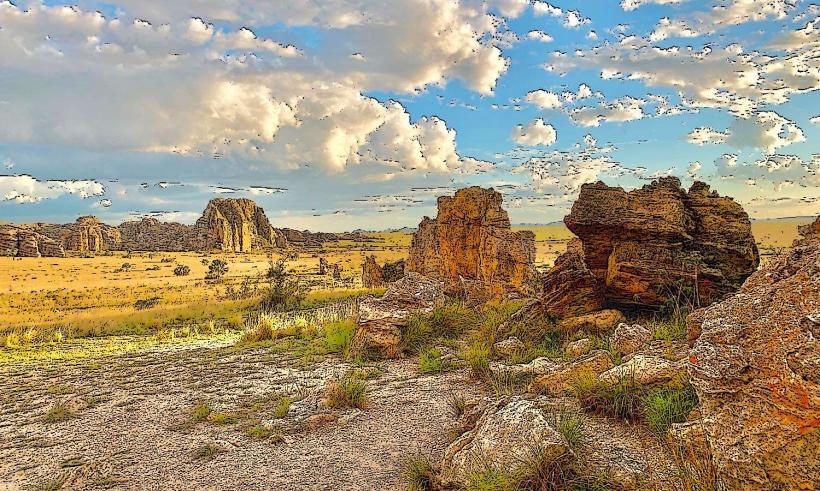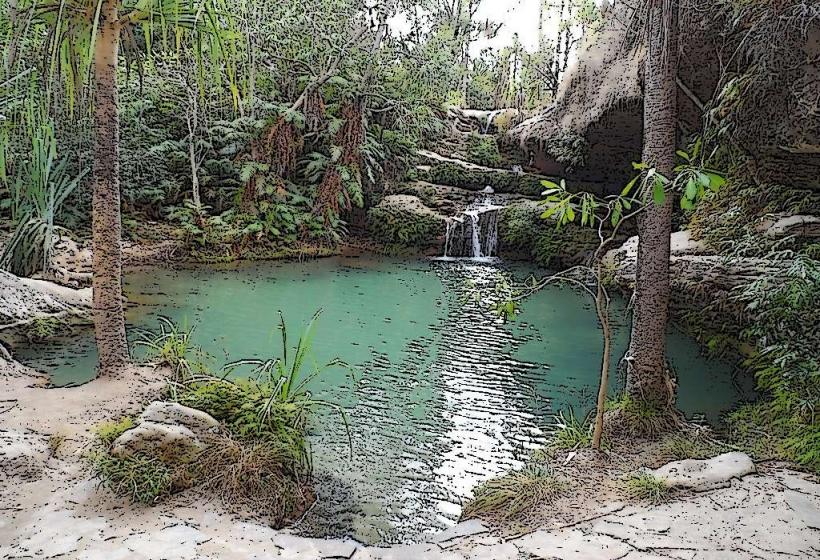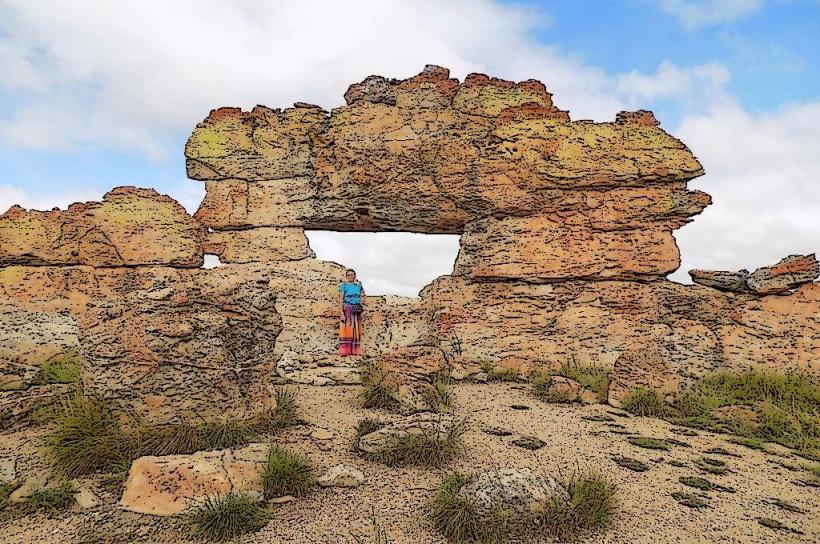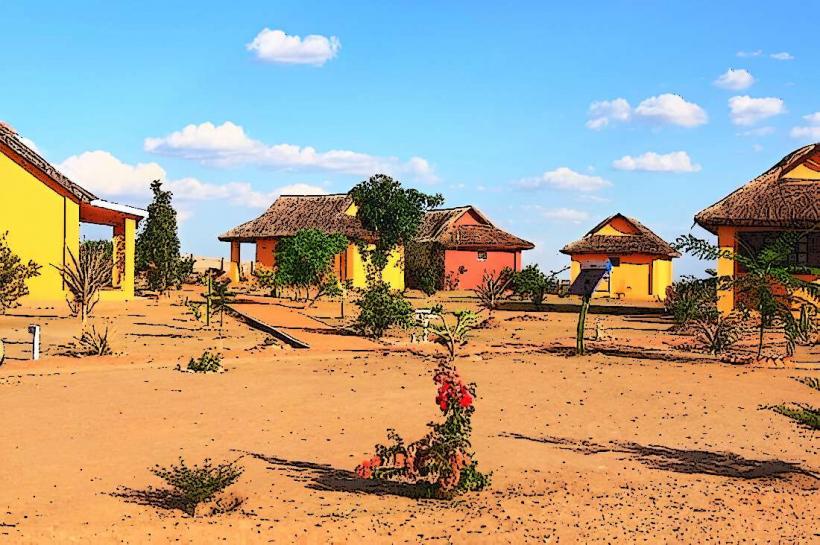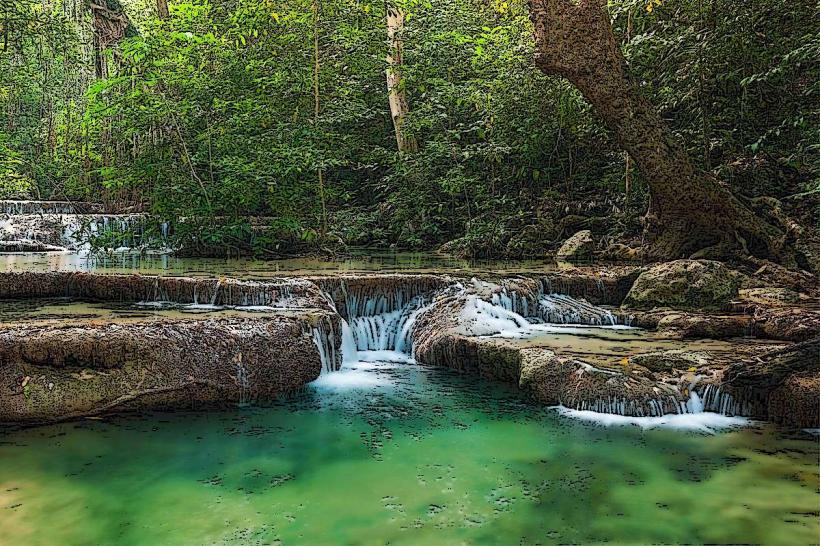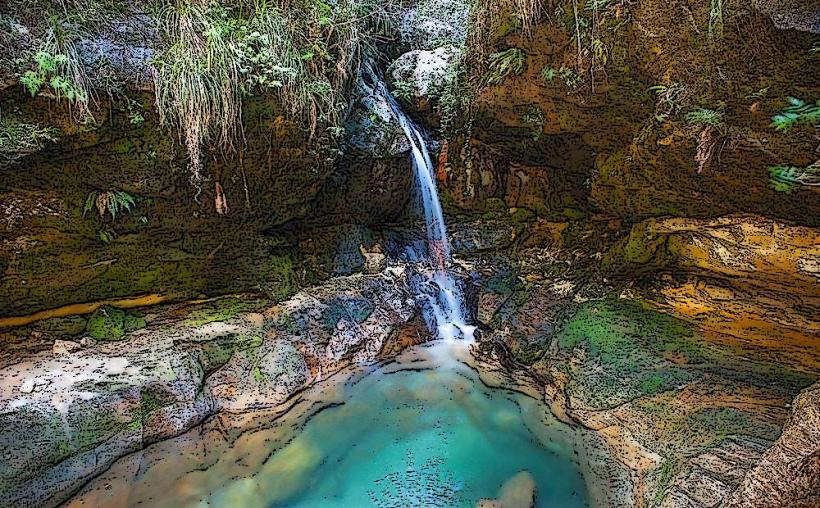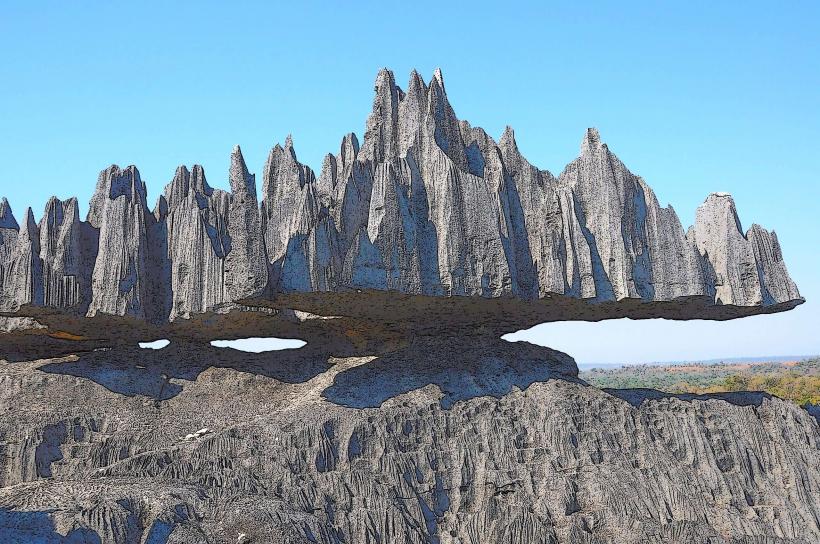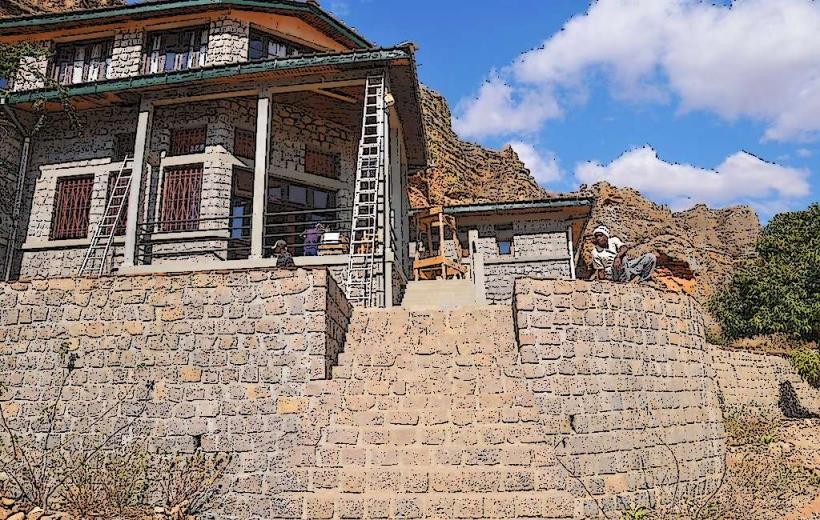Information
Landmark: Canyon of IsaloCity: Isalo
Country: Madagascar
Continent: Africa
The Canyon of Isalo is one of the most distinctive and captivating natural features of Isalo National Park in Madagascar. This canyon, along with its surrounding geological formations, is a major highlight of the park, offering visitors a chance to explore stunning landscapes and immerse themselves in the park’s unique environment.
Key Features of the Canyon of Isalo:
Geological Formation:
- The Canyon of Isalo is part of the broader Isalo region, which is known for its striking sandstone formations that have been shaped over millions of years by erosion. The canyon itself is a deep, narrow passage carved through the sandstone by the action of water and wind.
- The canyon features a variety of rock formations, such as rock pillars, towers, and gorges, which create an impressive landscape that changes in appearance as the sunlight shifts throughout the day.
- The canyon’s walls rise dramatically on either side, showcasing intricate layers of sandstone in shades of yellow, brown, and red, which provide a beautiful contrast to the surrounding vegetation.
Location and Hiking Trails:
- The Canyon is accessible via several hiking trails within Isalo National Park. The most popular route leading to the canyon is the Canyon des Rats (Canyon of the Rats), which is a relatively easy hike for visitors.
- The canyon can also be explored via other longer treks that combine visits to other notable landmarks in the park, such as the Piscine Naturelle (Natural Pool) and the Window of Isalo.
- The landscape within and around the canyon is rugged, with parts of the terrain offering challenging walking conditions, making it an exciting spot for adventurous hikers.
Flora and Fauna:
- The canyon is home to a variety of plant and animal species that are adapted to the arid environment of Isalo. Spiny bush and other drought-resistant plants thrive in the canyon’s rocky soil, adding a touch of greenery to the otherwise barren surroundings.
- Wildlife in the area includes several species of lemurs, such as the red-fronted brown lemur (Eulemur rufifrons) and the ring-tailed lemur (Lemur catta), which can often be spotted moving through the canyon’s shaded sections.
- The canyon is also a haven for various reptiles, including chameleons and geckos, as well as numerous bird species.
The Canyons’ Waterfalls:
- While the Canyon itself is mostly dry, several waterfalls and small streams are present, especially during the rainy season. These waterfalls provide a beautiful contrast to the desert-like landscape and often create small, tranquil pools of water where visitors can cool off and enjoy the surroundings.
- One of the more notable waterfalls in the area is located in the Canyon des Rats, where water occasionally cascades down into a small pool.
Cultural Significance:
- The Bara people, an ethnic group native to the southern region of Madagascar, have long had cultural and spiritual connections to the Isalo area, including its canyons. The region is home to rock tombs and other archaeological sites that indicate the historical significance of the canyon and its surroundings for the local communities.
- The Bara also use parts of the canyon as grazing lands for livestock, adding to the cultural and practical importance of the area.
Tourism and Activities:
- Trekking and Hiking: The Canyon of Isalo is a major destination for trekkers and adventure enthusiasts. The hike through the canyon is often part of a longer trek through Isalo National Park, offering a blend of nature, history, and geology.
- Wildlife Watching: The canyon offers opportunities to spot lemurs, birds, reptiles, and other wildlife in their natural habitat. The canyon’s varied ecosystems make it a rich area for nature lovers to explore.
- Photography: Due to its dramatic geological features and picturesque scenery, the Canyon of Isalo is a popular spot for photography. The sunlight that filters through the canyon creates stunning contrasts and colors, especially during sunrise and sunset.
- Swimming and Relaxation: Though the canyon itself is primarily dry, there are several nearby pools and waterfalls, such as the Piscine Naturelle (Natural Pool), where visitors can relax and swim after exploring the canyon.
Best Time to Visit:
- The ideal time to visit the Canyon of Isalo is during the dry season, which runs from April to October. The weather during this period is cooler, and hiking conditions are more favorable. The wet season (November to March) can make the trails slippery and difficult, though the waterfalls and water features may be more prominent during this time.
Accessibility:
- The Canyon of Isalo is accessible from the town of Ranohira, the main gateway to Isalo National Park. Visitors can reach Ranohira by road from Madagascar’s capital, Antananarivo, which is about 700 kilometers away.
- Guided tours are recommended for exploring the canyon, as the park can be difficult to navigate without a local guide, and they also offer valuable insights into the park's ecology and history.
Conclusion:
The Canyon of Isalo is one of the most stunning features of Isalo National Park, showcasing the park's unique geological beauty and offering visitors an opportunity to immerse themselves in Madagascar's natural wonders. Whether you’re hiking through its striking sandstone formations, exploring its wildlife, or simply taking in the breathtaking landscapes, the canyon provides an unforgettable experience for nature lovers and adventure seekers alike.

